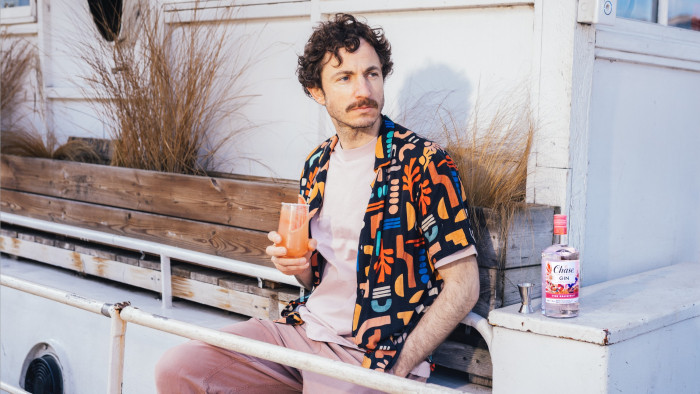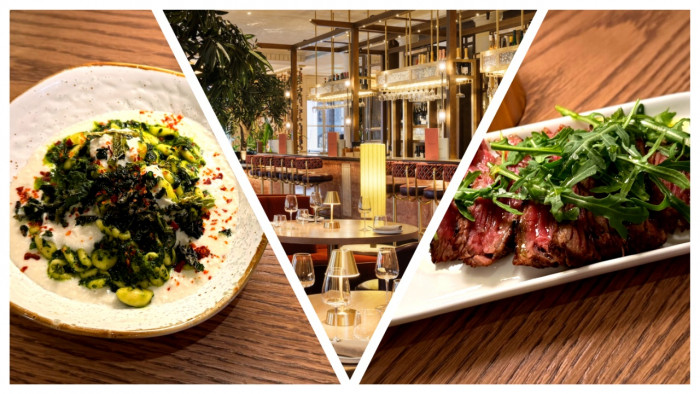In the picture, they couldn’t look happier. At first glance, there is nothing unusual about the family snap, save for the large number of children. Some hold hands. Others drape affectionate arms around a sibling’s shoulder. Their matching red T-shirts pop against the bright blue sky behind them as if they’d been coloured in for a children’s book. The girls have dark, flowing locks, in the same style as their mum. The boys have bowl-bob haircuts, exactly like their dad. Everyone is smiling.
To the world – or at least, to anyone who cared to look at the Turpin family’s Facebook page – they appeared a loving, wholesome family. But there is one clue in that picture that betrays a sinister truth that no one noticed: each child has a number written on their T-shirt beneath the word ‘Thing’.
The parents, David and Louise Turpin, who were arrested last month, have joined an international rollcall of horror that sickens and spellbinds us in equal measure: the people – usually men – who imprison women or children in their home for years to act out their own diabolical storyline.
We want to look away but we can’t, compelled to devour every scrap of information that the media tosses us. We read misery-lit novels about them and watch films or TV like the Oscar-nominated Room, the Greek drama Dogtooth or Netflix’s Unbreakable Kimmy Schmidt. We develop theories and lock our doors. “They remind us that monsters are real and they’re out there,” says sociologist Margee Kerr, author of Scream: Chilling Adventures in the Science of Fear. “We say, ‘Yes, this is the bogeyman, the thing we grew up fearing.’”

Aravindan Balakrishnan was jailed for 23 years in 2016
What drives these ogres to take prisoners? Most experts believe the answer is simple enough: power. “You must think of these people as falling into two distinct groups: the familial cases and the non-familial cases,” says criminologist David Wilson, host of CBS’s docu-drama Voice of a Serial Killer. “But in both I think what ultimately drives them all is sex, power and control. It is about the desire to manage everybody who comes into their world.”
Sometimes they snatch their victims off the street for use as their personal sex tap, as Ariel Castro did to Amanda Berry, Gina DeJesus and Michelle Knight in Ohio between 2002 and 2013. Or like Phillip Garrido, who kidnapped Jaycee Dugard in California in 1991 when she was 11 and kept her for almost 20 years. Or Wolfgang Priklopil, from Austria, who kept Natascha Kampusch in a cellar for eight years until she escaped in 2006.
Then there are the ones for whom it was simpler to just source their victims from home. In Lambeth, south London, Aravindan Balakrishnan kept his daughter, Katy Morgan-Davies, as a slave in his Maoist cult for 30 years and raped his brainwashed followers until his arrest in 2013. The infamous Josef Fritzl kept his daughter, Elisabeth, a prisoner and sex slave in a dungeon in his Austrian home for 24 years until 2008 – all while her mother lived upstairs apparently oblivious.
And those are just the front-page stories. “Domestic servitude, slavery and sexual exploitation is a much bigger problem than society recognises,” says Rachel Harper, helpline manager at Unseen, a charity that works with victims of modern slavery in the UK. “They may not all be as dramatic as the Turpin case, but we’re seeing an increase in cases of people keeping others in isolation, not letting them out, sometimes using sex to control them, or violence.” A recent government report revealed that cases of sexual exploitation have risen in Britain from 830 in 2014 to 1,310 in 2016 – an increase of 58 per cent.
Few have spent more time investigating captors than Berlin-based journalist Allan Hall. He’s written books on Priklopil (The Girl in the Cellar), Fritzl (Monster) and Castro (Captive). “For all three of those men it was about being master of their own little kingdom,” he says. “It’s almost like men who play train sets: they suddenly have control in a world where they have little control. Like a form of protection from the outside world.”
Yet none derived more pleasure from power than Fritzl. “The thing that sticks in my mind is that he would go on sex holidays to Thailand for three weeks at a time and would stuff Elisabeth’s freezer with cheap pizzas and ready meals,” says Hall. “The whole [cellar] was a jerry-built contraption and sometimes the power would go off after two or three days, and she would be forced to eat rotting food for the next two weeks hoping that he came back to save her. No lights, no candles, no sound, with children. He had a total and utter disregard for human life and feeling.”

Inside the basement where Josef Fritzl held his daughter Elisabeth captive
We may never learn the full names of the Turpin children (other than the fact that they all begin with ‘J’). But history will never forget the names of their parents. David and Louise Turpin are accused of starving and torturing their 13 children, shackling them to furniture for months on end and taunting them with pies laid just out of reach. Prosecutors say the children had been beaten and strangled so violently that some have cognitive impairment and nerve damage from which they may never fully recover. The eldest – a woman of 29 – weighed five-and-a-half stone when found by police on 14 January this year.
To kidnap and control someone for an extended period is to exert power over another human that few can fathom, but that these captors crave. Castro fits that bill. He used chains, padlocks and secure rooms to hold his captives. He beat them, too, physically dominating their bodies to the extreme. Priklopil was similarly aggressive towards Natascha Kampusch at first. But, as the years went by, both men began allowing their captives outside.
“Castro got to a point where he would parade the women in the garden occasionally,” says Hall. “And Priklopil would take Kampusch to ski resorts.”
Here lies another source of our fascination with these cases. Why, when opportunities inevitably arose, didn’t the captives escape earlier? “Psychological ties can bind tighter than physical ones,” offers Wilson. Many of these men turned brainwashing into an art, manipulating their victims until they surrendered to their internment. The 17-year-old Turpin girl who climbed out of a window to get help, for example, was initially followed outside by a younger sister, who turned back out of fear. She knew the punishment for escape.
Others cast different mind spells over their victims. Castro, for instance, would pretend to leave the house to see if his hostages would try to escape. When they did, he would leap out and beat them. Garrido told Dugard that by letting him abuse her in the 17 years she was his prisoner, she would be protecting other girls from his desires. Fritzl told Elisabeth that poison would be released into the cellar if she tried to escape.
Then there was Priklopil. “Priklopil thought he could force a woman to love him,” says Hall. “And in a very warped way it worked. To this day [Kampusch] carries a picture of Priklopil in her handbag, drives his car and even acquired the house in which she was held and spends weekends there.”

Where Natascha Kampusch was held captive for eight years by Wolfgang Priklopil
It’s easy to blame such cruelty on broken childhoods or violent homes. And some were indeed sexually or physically abused as children. But monsters, says Wilson, are not made overnight. “This isn’t about nurture, this is about nature,” he says. “These behaviours were part of their genetic soup and I think it is much more to do with the fact that the child had these issues and they weren’t nurtured out of them. I’ve seen this in many of the serial killers I’ve worked with.”
Are they, then, just malignant narcissists enslaved by their own desires? Or psychopaths? Wilson thinks not; that could excuse their depravity. “Often we use the words ‘psychopath’ and ‘narcissism’ popularly, partly because of that dreadful book The Psychopath Test by Jon Ronson, that completely misses the point,” says Wilson. “Neither disorders are as commonplace as we think, but are about ingrained patterns of behaviour since childhood. With some of [these men] there is certainly a personality disorder. And that might have some of the traits of psychopathy and narcissism, but I’d need to be able to speak to and read a great deal more about that individual over a period of time to come to that conclusion.”
Some are even deluded enough to think they’re doing their victims a favour. “I think some of them do feel there is an almost altruistic aspect to what they’re doing,” he says. Fritzl did. He once explained he wanted to protect Elisabeth from the drugs, drink and bad company that he thought had blighted her teenage years. “I had to do something,” he told his lawyer. “I had to create a place where I could keep Elisabeth, by force if necessary, away from the outside world.”
David and Louise Turpin did everything they could to look normal and happy – that Facebook picture says it all. But there were signs. When asked in hindsight, one neighbour said she’d only once seen the children in two years, and only three of them. She described them as looking like vampires because they were “really, really pale”, and “only came out at night”. Still, nobody thought to investigate.
But why are we, as a society, so captivated by these captors and their crimes? First, because they remind us of who we are, according to Kerr. “Through seeing and hearing about blatant and severe violations of what a society considers ‘good’ and ‘righteous’, we can feel validated and secure in knowing we are the ‘good’ guys. In some ways, these horrific stories can bring us together to protect ourselves.”
It’s more than that. In the Turpins’ case, Kerr says, their prolific use of social media reminds us of the gap between our public and private lives. “It’s interesting how much of our lives have become curated online versus authentic interactions,” she says. “And it’s curious to think of the consequences: if all that matters is what you present to the world online, then does that mean you can do what you want in your private lives because nobody is going to know?”
There is one other reason we so love these stories: they give us hope. They are why, to this day, we still wonder about Madeleine McCann, and how we know not every abused child must end up like Baby P. “Stories of escape are so important for us culturally because we have to believe that hope is possible,” says Kerr. “It motivates us as individuals and as a society, and it reinvigorates us to know that the monsters don’t always win. We can fight back.”
Yet, despite all that, there still arises one chilling theory: that we only know the plight of these women, girls and boys because people like Castro, Fritzl, Priklopil and the Turpins got sloppy. The more competent captors are still out there, still smiling sweetly at you through Facebook, still keeping their victims alive behind the drawn curtains of some suburban façade. Still among us.
(Images: Rex/Getty)
Latest
Related Reviews and Shortlists










